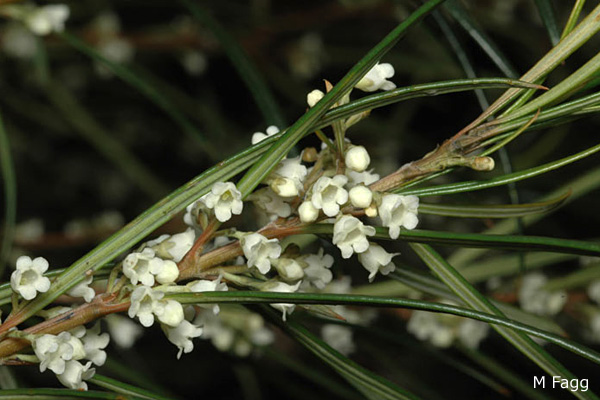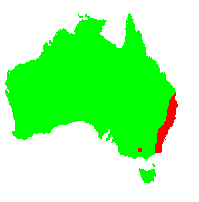General Description:
There are about 30 species in the genus Logania, most of which are endemic to Australia. About half of the species are found in south-western Western Australia. They are generally herbs to small shrubs with small flowers. Some species, including L.albiflora, have fragrant perfumes and have considerable horticultural potential.
Logania albiflora (previously known as L.floribunda) is a dainty, upright shrub from 1.5 to 2.5 metres high. It has narrow, opposite, dark green lance-shaped leaves (lanceolate) 2 to 7 cm long and 1 cm or less wide. The small, white flowers occur in late winter and early spring and are less than 0.5 cm in diameter. The delicate fragrance can be appreciated some distance from the plant.
In nature, the narrow-leaf logania grows on light, slightly acid soils in open forests. Like most members of the genus, it is not well known in cultivation but it appears to be hardy in well drained, sandy to sandy-loam soils. It would be expected to perform best in a semi-shaded position. Its fragrance and free flowering nature would make it an attractive plant for a native garden and it deserves wider cultivation.
Propagation may be carried out from seed without any pretreatment. Cuttings are also successful but they may be slow to strike.

Logania albiflora
Photo: Murray Fagg – Australian National Botanic Gardens
 Australian Native Plants Society (Australia)
Australian Native Plants Society (Australia)













